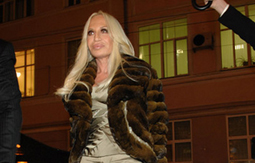The concealing tactics of the fur industry
Kate Moss, Rihanna, Madonna, Jennifer Lopez, Lenny Kravitz or Ashton Kutcher: They wear fur and are not ashamed of doing so. Even models who used to advertise for the campaign „I’d rather go naked than wear fur“ now present fur at fashion shows in Paris, London, Milan and New York. Only few top designers refrain from working with real fur. Fur is considered to be sexy and thus, money can be earned easily with it.
Accessories as trailblazers
Fur has become socially acceptable once again – through the back door, with cheap fur accessories no longer sold in exclusive fur boutiques but in department stores. Not floor-length fur coats but fashionable borders and cuffs on the hoods of winter jackets, on hand bags and winter boots have become all the hype. Trimmings have paved the path for the return of fur fashion on a grand scale. Fur is no longer something that is attainable only for the upper classes – it is widespread and common among all social stratums. Small fur linings and trimmings are cheaper to produce than entire fur coats and make winter coats only slightly more expensive.
In this fashion segment, not only „classic“ fur animals such as minks, foxes or chinchillas suffer but also pets such as cats, rabbits or dogs are used to produce accessories. The difference can only be made out by experts using special measuring devices.
Fancy names – deceptively authentic
Many of the articles sold in department stores come from low-wage countries like China. Dubious, incomplete or false labels are deceptive and fool many consumers. Fancy names such as „Finn Raccoon“ for raccoon dogs, „Asian Raccoon“ for domestic dogs or „Chinchilette“ for rabbits are misleading – consumers do not really learn which animals were killed in the name of fashion. Since March 1, 2013, this is no longer permitted in Switzerland. Fur and fur products must be declared unambiguously, stating the animal species and its origin as well as the method of fur production.
We practice resistance
For years now, the Zurich Animal Protection Association has fought against the suffering of animals in the name of fashion. We side with the animals and attempt to defend them – especially those animals used to produce fur industrially, for fashionable accessories. We fight against designers who have no respect for animal life. But we congratulate those fashion-conscious persons who are stylish and fashionable without fur.

